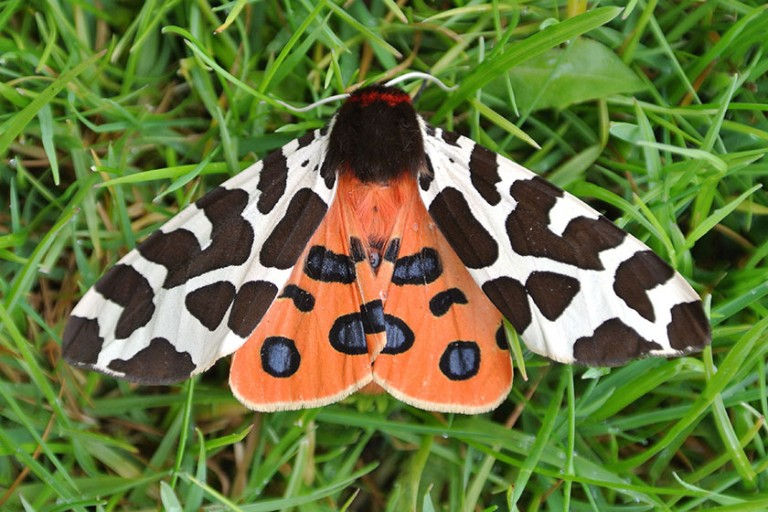In my opinion, moths are one of the most underrated organisms in the animal kingdom. Despite their similarities to butterflies, they are often seen as uninteresting or dull compared. Some of the biggest myths are that they are all brown, eat your clothes and are only out at night. This could not be further from the truth! There are around 2,500 species of moth in the UK alone, compared to only around 60 species of butterfly. They have a massive range of different ways of life. Many are nocturnal and only come out at night, but there are several species that are diurnal and come out in the day such as the cinnabar (Tyria jacobaeaeor) or hummingbird hawkmoth (Macroglossum stellatarum). The different species feed on all kinds of food from fruit, tree sap, leaves, roots, nectar and some don't feed at all as adults as they don't have any mouthparts!
Of course, they have a huge importance to the wider environment from being a vital food source to other organisms such as birds, mammals and spiders and they are pollinators of wildflowers and crops. Gardens provide an essential year round habitat with some of the best flowers and plants including heather, sallow, ivy, buddleia, red valerian, foxglove, primrose, mullein, thyme, verbascum, purple plantain, honeysuckle and flag iris as just some examples.
To view these awesome organisms, you can make a sugar solution to put on tree trunks and fence posts, set up a light and white sheet or use a moth trap. Moth trapping is a great way to find out exactly what kind of moths are present in your garden. It is a completely harmless and safe way to view them up close before releasing them again in the morning. Last summer I got to do quite a bit of moth trapping and was amazed at what you can see in the UK! Make sure to handle them with care and not touch their scales, which can be damaged easily. It's especially great getting to learn all their weird and wonderful names. For example, burnished brass (Diachrysia chrysitis), chocolate-tip (Clostera curtula), dingy mocha (Cyclophora pendularia), feathered gothic (Tholera decimalis), snout (Hypena proboscidalis) and old lady (Mormo maura).
A skinner moth trap:

A few moths I caught last summer (August 2021) and some of the most distinctive UK species!
Mother of pearl (Pleuroptya ruralis)

Yellow barred brindle (Acasis viretata)

The blood-vein (Timandra comae):

Elephant hawkmoth (Deilephila elpenor):

Garden tiger moth (Arctia caja):

My absolute favourite moth species - the Buff-tip (Phalera bucephala) that resembles the bark of a birch tree, so cool!

Angle shades (Phlogophora meticulosa):

Feathered gothic (Tholera decimalis):

Useful links
All about moths and what you can do - https://butterfly-conservation.org/sites/default/files/all-about-moths_young-people-leaflet.pdf
Moth trap information - https://www.nhbs.com/blog/the-nhbs-guide-to-moth-traps
References
Komentarze